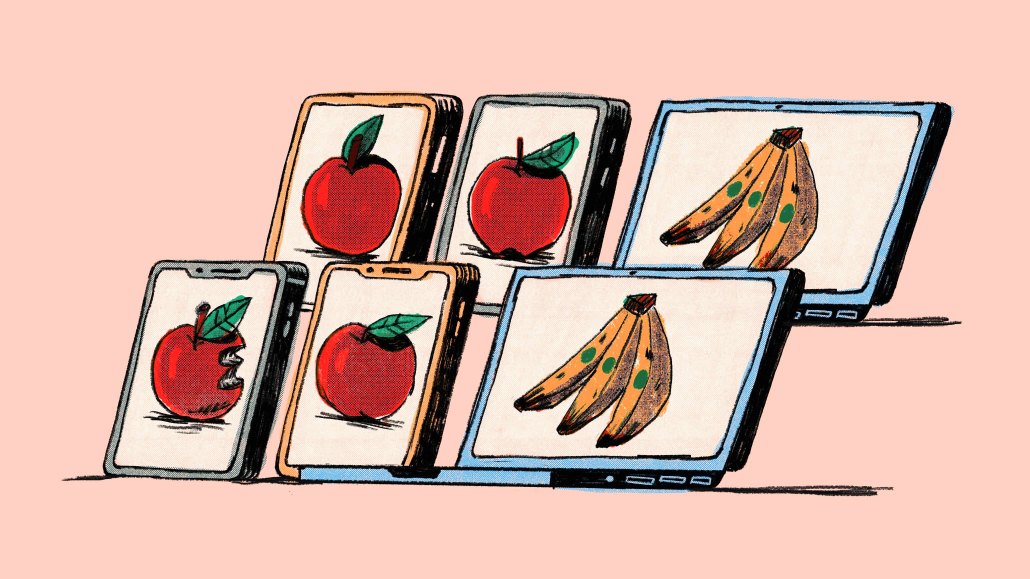Companies seem determined to make everything a retail media network. How did we get here?

As a Digiday+ member, you were able to access this article early through the Digiday+ Story Preview email. See other exclusives or manage your account.This article was provided as an exclusive preview for Digiday+ members, who were able to access it early. Check out the other features included with Digiday+ to help you stay ahead
It seems businesses are bent on making every surface shoppable, transforming everything that can be an ad network into one. It looks to be a growing trend this year, proven by the growth of the retail media network space, in which even companies beyond traditional retailers like Chase Bank and United Airlines have recently unveiled their own ad offerings to challenge more conventional retail media networks from the likes of Amazon, Walmart and Target.
No surface is safe as retail media moves off-site, into brand awareness channels. This shift is fueled by partnerships like the one between Instacart and YouTube, making YouTube ads shoppable for CPG brands, or Walmart’s acquisition of Vizio, that will add streaming capabilities to the retailer’s ad offering. By the end of this year, U.S. advertisers are expected to shell out $54.48 billion on retail media, according to eMarketer.
All signs point in the direction of everything that can become an ad network will do just that. But why? And how did we get here?
A brief history of shopper marketing
Retail media itself isn’t new. Before the dawn of the digital age, retail media was known as shopper marketing. Think of it as the good old days when people visited stores in-person, where there were shelf-level signage, walls of televisions and signs throughout the store.
Then came the internet and, more importantly, Amazon, which shifted retail media from a physical store environment to a digital one, where virtual shelf space is infinite and ad inventory is more varied.
“The truth is that retail media has been around since, like the dawn of retail,” said Gemma Spence, chief digital commerce officer of VML. “From an advertising standpoint, it’s now very dynamically driven around commercial factors and availability, stock pricing, promotions, as well as creative and messaging.”
Amazon is often credited as the O.G. of retail media networks, mostly catering to brands selling on the platform via sponsored search products. Eventually, Amazon doled out more ad options beyond sponsored search, including video offerings. The company also introduced its own demand-side platform, making it a more sophisticated media buy. As Amazon’s ad business grew, retail media challengers like Walmart and Instacart took notice, launching their own ad businesses.
And the list of retail media networks is only growing. Companies are sitting on mounds of first-party data, increasingly ready to shop it around to advertisers to drum up alternative revenue streams. Notably, Google’s third-party cookie is on the verge of extinction, making first-party data as valuable as gold to advertisers, who are scrambling to identify alternative ways to find and target audiences.
It’s estimated that there are more than 200 retail media networks at this point, according to Mimbi, a retail media intelligence platform, with major players in the game being, of course, Amazon, Walmart, Instacart, Kroger and Target. Other non-retail companies are also throwing their hats into the retail media network ring, including financial institution Chase, which launched Chase Media Solutions in April, and travel company United Airlines, which launched its own network called Kinective Media.
And this year, department store retailer Saks launched Saks Media Network, convenience store retailer Wawa introduced Goose Media Network, T-Mobile set up T-Mobile Advertising — the list goes on.
“There’s been a world forever of these destinations that have very rich first-party data that’s not dependent on cookies. Those are banks. Those are retailers. Those could be pet products,” said Jared Belsky, CEO and co-founder of Acadia, a digital media and retail media analytics agency. “They’ve now decided to make that data available for targeting.
It makes sense. About $1 of every $7 in U.S. ad dollars is expected to go to retail media this year, according to eMarketer, making retail media networks big business.
Shifting spend and budgets
At the start, retail media network spend came from shopper marketing or trade budgets — ad dollars dedicated to engaging shoppers in retail environments. This includes in-store promotions, displays and the like. But as retailers roll out ad inventory geared toward boosting brand awareness, they’ve got their hands out for brand marketing dollars.
In March, The Home Depot said as much during its inaugural InFront, its own version of upfront negotiations. Ted Decker, chair, president and CEO of The Home Depot, told attendees that the business was being built for marketing dollars as opposed to trade or shopper marketing dollars.
“Some of the more sophisticated CPGs have actually moved brand and shopper under the same marketing leadership and they’re measuring them holistically,” said Kristi Argyilan, who is svp of retail media for Albertsons Companies, the parent of Albertsons Media Collective. “It’s not one versus the other.” They’re measuring them all together as best they can, she added.
Albertsons itself is making a play for brand dollars, Argyilan said, much like The Home Depot. Not only does this move allow Albertsons to take in more ad dollars, but it also beefs up its ad business. Retailers are increasingly rolling out brand awareness capabilities, like CTV and social, to better prepare them to ask for these brand marketing dollars, per agency execs. But it’s yet to be determined if retail media has proven itself to be an effective brand marketing channel.
“Actually, it’s in a brand’s interest to be driving mental availability [or brand awareness] within the retail walled gardens, because it does two things,” said Spence. “It drives salience as well as it drives immediate transactions.” This makes retail media both a brand awareness and performance play, in which spend would come from brand marketing budgets as well as more transactional buckets of money, like trade and shopper marketing.
Even with all of the changes in the retail media network landscape, including the increase of varied players in the space and the expansion of ad capabilities, the definition of what makes a retail media network remains the same, Spence added.
“The definition of retail media is any digital media sold by a retailer,” she said.
Where do retail media networks go from here?
So what comes next? Where the world of retail media networks goes from here is still a work in progress. With more than 200 networks in the space, agency execs are grappling with how to navigate the growth and divvy up their clients’ ad dollars within it.
Retail media’s growth spurt can be overwhelming for advertisers, many of whom might not have the budget to test every single retail media network to truly know what works for them and what doesn’t. Even those who do have that kind of budget have to draw the line somewhere. For example, Georgia-Pacific consolidated most of its retail media spending with seven networks after testing over 25 options. In other words, the biggest retail media players may very well win out.
What is certain is that retail media networks have matured beyond direct response, last-click channels to become brand building opportunities, especially as these networks continue to roll out additional ad inventory across streaming, social and other channels, per Belsky.
“It’s not fair and it’s too limiting to keep looking at retail media as a lower funnel only channel,” he said. “There are so many exciting new ad units — video ad units, display ad units — that allow us to think more about retail media as building brands, not just harnessing ROAS.”
More in Marketing

Pitch deck: How Amazon is recasting Twitch as a core part of its CTV pitch
Amazon is positioning Twitch as a defining asset in its CTV ambitions.

Netflix transforms former mall department stores into experiential venues
The location in Dallas opens this week, and one at the King of Prussia mall near Philadelphia opened last month.

Future of Marketing Briefing: AI has created a new talent paradox in programmatic agencies
The job isn’t execution anymore. AI handles that. The job is judgement.








